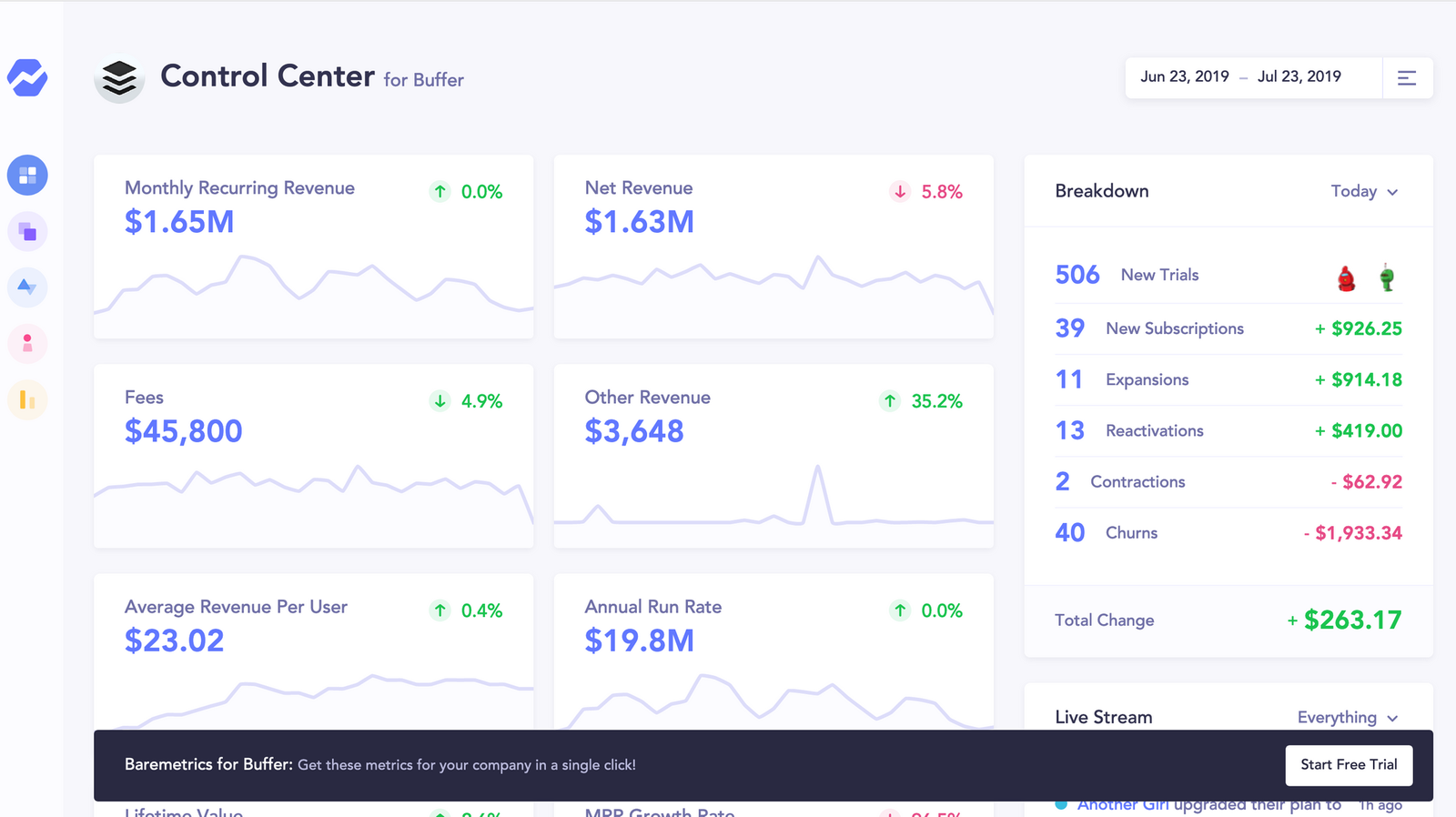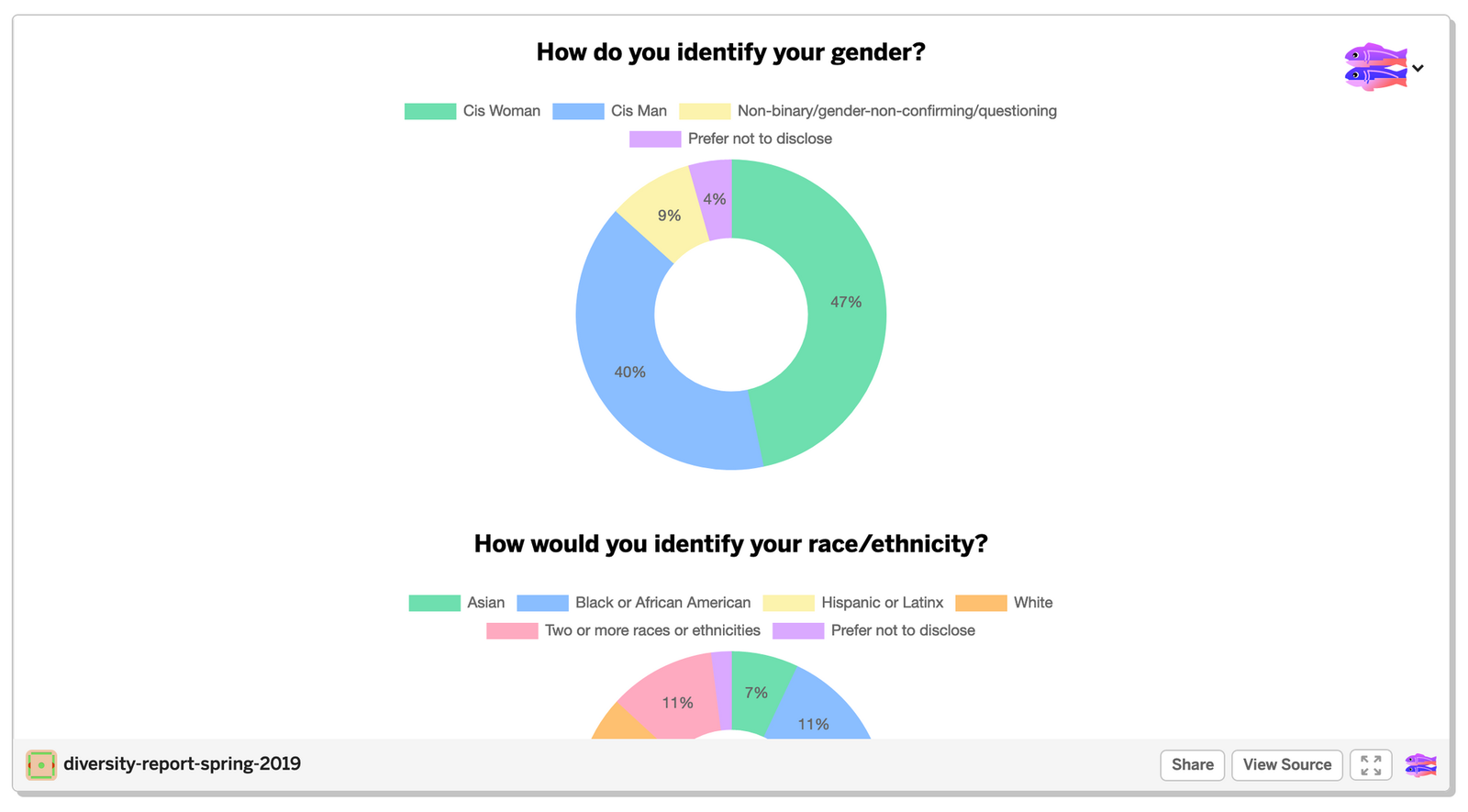Cover photo by freestocks.org on Unsplash
Working in the open is not just about publishing metrics...
...it also involves some very clever and very honest content marketing. As a content writer for Metomic, I've been looking at how other companies do this. The following three have stood out to me recently.
1. Baremetrics
Baremetrics is a good place to start, because they are literally a publisher of metrics. And with their tools they have helped facilitate what people are calling the open startup movement, by letting companies share their metrics very easily.
Baremetrics were transparent from the moment the idea was conceived, so let's have a quick chronological breakdown of what they did:
Live tweeting
In October of 2013, Baremetrics founder Josh Pigford set himself a challenge to make what he called a "Stripe analytics app" in one sitting. By November, he launched Baremetrics. He live tweeted the whole thing.

There is value in watching this journey: it completely humanises the founder and therefore makes him trustworthy. Pigford even asked Twitter what logo they preferred. He was open from the very beginning, even before launch.
That was my entire content marketing strategy early on: share it all - Josh Pigford, founder of Baremetrics
Using your own tool on yourself
In 2014 Pigford decided to use data from Baremetrics itself to demo the Baremetrics dashboard. He blogged about this and called it either the dumbest or most useful thing he's ever done. Within the blog post itself he even played with the idea that there is such a thing as being too open:
But that brings up the question, is it possible to be too open? What about competition? What will customers think? Will they think my revenue is too low right now so I’m not a legitimate enough business? Will they think my ARPU is too high and that I’m gouging them on prices? Without having their own data in there, will potential customers gloss over the features and think it’s not worth their time? - Josh Pigford, founder of Baremetrics
So within one blog post Pigford has done the classic 'see how we use our own tool' thing very effectively, as well as still logging and highlighting worries and doubts that naturally come with the journey.
Being vulnerable
What's worked for Baremetrics is Pigford's willingness to be transparent about both the company and himself. The blog isn't even called a blog. It's a Founder's Journey. It's Pigford's blog as well as the Baremetrics blog.

Recently he wrote about maintaining good mental health as a company founder. He starts the piece off by briefly describing a very anxious day. By being vulnerable with his readers, he demonstrated that he trusts them. If someone trusts you it's very easy to trust them back — and you want to be able to trust the people and products you interact with, right?
2. Buffer
Buffer are a social media management platform, and are known to be the pioneers of open startups. They are of course, open with their metrics. Here's them on Baremetrics:

So first of all with Buffer: open.buffer.com is the URL for their blog. Because it is a blog about being open 👏. Note that they also have a resource centre, which is different. Having these two things separate is beneficial because writings about transparent company culture are their own thing if you do it as much as Buffer do.
Not just open about profit, but profit sharing
If Buffer turn a profit they split that up among all their employees. They are completely transparent about how they do that, and it's outlined in this blog post. They also give a sizeable chunk of profits to charity.
The detail they go into in this post about how they came up with their profit sharing formula, and how they decided what charities to give to demonstrates that they are serious about this exercise. And that is what makes them trusty.
An honest look inside of company culture
Recently Buffer posted about being whole at work. What they mean by this is that you shouldn't put on a work face; just be yourself. What they've done here is talk about an important piece of their internal culture, and how it has benefited them. They are transparent with us about how they are transparent with each other. If as a user, you know that there's a friendly company behind a product, it's much easier to trust that product.
3. Glitch
Glitch's approach is less about publishing piles of stats, and more about maintaining what they call a Culture Zine. Glitch is a dev community. Or you could call it... a social media platform. It may not seem like one because of their cheery design and excellent approach to transparency.
Admitting your mistakes
Glitch started out twenty years ago, and obviously a lot has changed since then. In their recent zine entry about being an ethical company, they made clear that they weren't always willing to put as much effort as they do now into diversity.
Like most tech companies that have been around for two decades, we used to be a really homogenous place. Unlike most tech companies, we admit that we screwed up and we're not making any excuses for it.
They also work hard to show that they aren't just saying that they care about diversity. Part of how this is achieved is indeed by publishing some stats, but in their own way.

Owning mistakes is important: saying "okay I get what I did wrong and now I will fix it" is much more trusty than maintaining a cosmetic veneer of perfection by never admitting fault. This comes through in their diversity stats — you can see that there's room for improvement in some areas, and they aren't afraid to show that.
Practicing what you preach
Glitch have a very neat company handbook, which is entirely made public. On the one hand, they are proudly sharing with the world what it's like to work at Glitch. On the other, they are holding themselves accountable if they stray from anything written down here.
After all, it's impossible to trust a company if you know they don't practice what they preach. That's why we're committed to zero gaps between our stated and lived values. And that's why our employee handbook is public and open-source.
They said it themselves: it's about trust. They are transparent because that's the only real way to be trustworthy.
Being transparent about pay
This might be something that scares certain employers the most. But isn't it scarier trying to manage a team who, while trying to do a good job, are constantly fretting that someone else is getting paid more to do the same thing? At Glitch:
- salary ranges for all roles are shared internally
- salary ranges for job listings are also shared
- executive pay is capped at 5x the lowest salary
So it's both fair and transparent; everything a company needs to be.
So yes it's worked for these three, but you need to find your own way
There's no exact science to transparency. You have to see what works for you. Also, it takes time. Don't just sit there thinking, 'lol but I admitted my logo choice was a bad call, why doesn't anyone trust me yet?'
Trust is something that you have to build from being consistently transparent. And honestly, no one will know or care if you don't shout about it. It starts with content.
As we saw, Josh Pigford of Baremetrics started with transparent content before he even had a product. Then he maintained a proudly confessional blog. Buffer's approach was more about publishing revenue stats and celebrating their internal culture of supporting each other. And finally Glitch hold themselves accountable and learn from their mistakes in the open.
FAQs
What are some examples of companies that embrace transparency and openness?
Companies like Baremetrics, Buffer, and Glitch are prime examples of businesses embracing transparency by sharing their metrics, company culture, and even mistakes, fostering trust and openness with their audiences.
How did Baremetrics lead the open startup movement?
Baremetrics led the open startup movement by being transparent from the beginning, even live-tweeting the development of their product and sharing their company metrics openly, including their challenges and successes.
What does Buffer do to promote transparency?
Buffer promotes transparency by sharing their profit-sharing model, discussing internal culture openly, and making employee salaries transparent, ensuring their employees and users know they practice what they preach.
How does Glitch demonstrate transparency in their company culture?
Glitch demonstrates transparency by sharing their mistakes, such as their past lack of diversity, and maintaining an open, public employee handbook, which holds them accountable to their values.
Why is transparency important for building trust with customers?
Transparency helps build trust because it shows that a company is open, honest, and willing to share both their successes and challenges, making them more relatable and accountable to their customers.
